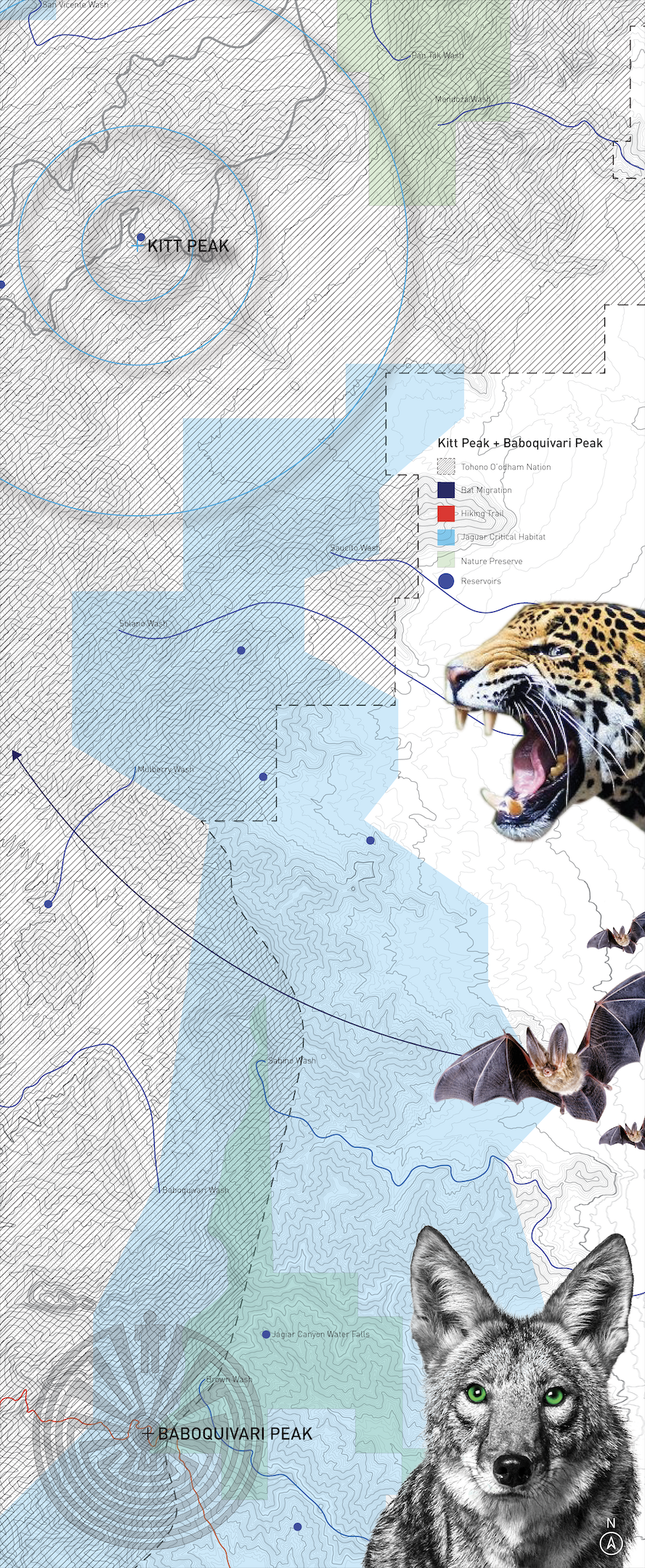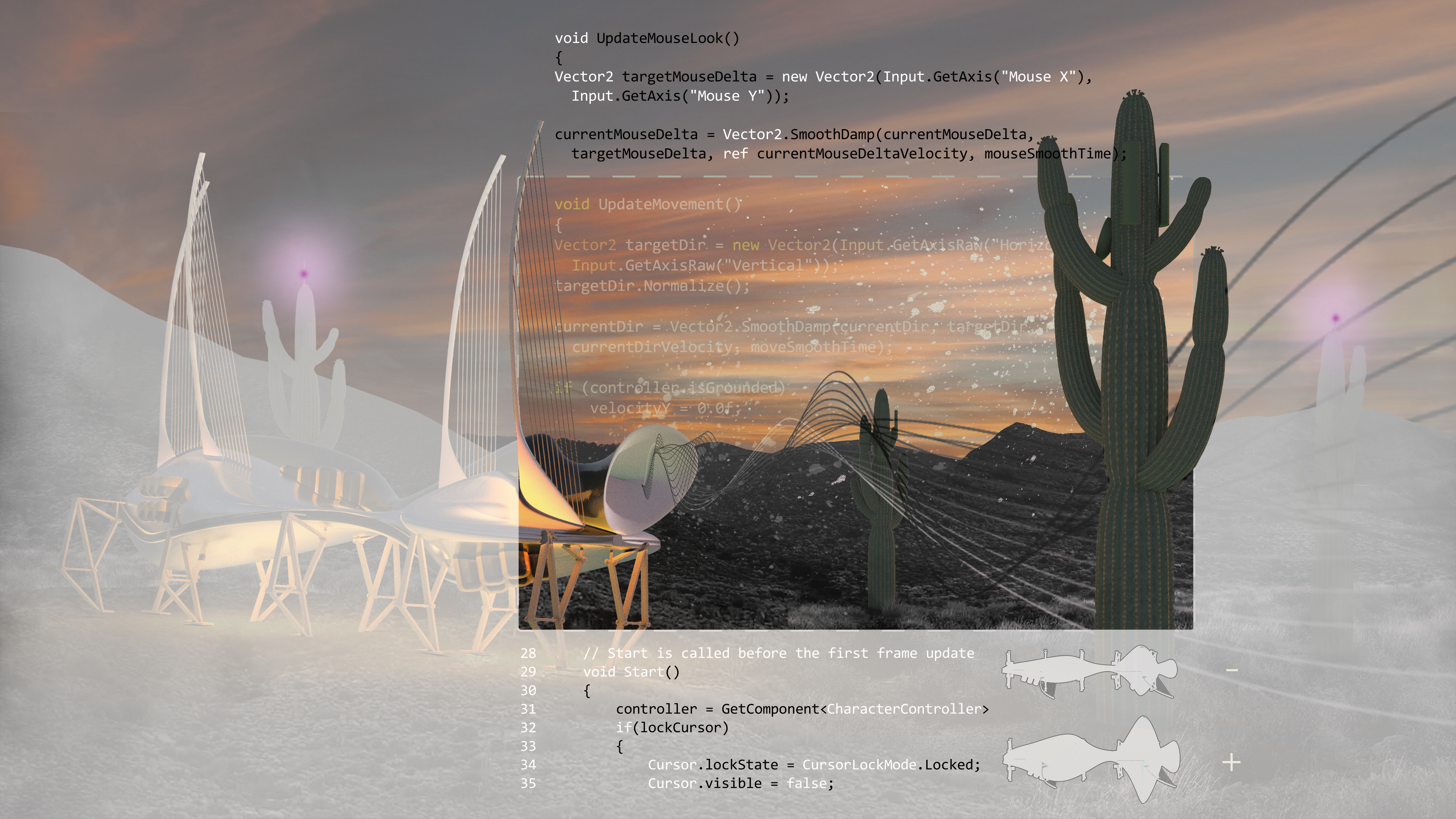PROFESSOR
GEOFFREY THÜN
STUDIO SECTION
MAVERICKS, THE MULTITUDE AND THE MESA
Within the cannons of western mythology and societal practice(s), the landscape construct of the desert has been positioned as a place in which outcasts, heretics, and visionaries have been voluntarily and involuntarily displaced in order to repent, reconcile, and imagine possible worlds.
In America, since the time of its settler colonization, the desert has also been a territory of extreme cultural experimentation – consumer, technological, military, utopian, environmental… At the geological edge where the Sonoran Desert meets the Colorado Plateau, this studio will engage three subjects in search of a social, conceptual, material and systemic proposition:
(i) the Mavericks: renegade disciplinary and adjacent figures whose work and ideas have defined trajectories of design possibility within this terrain. (ii) the Multitude: cultural groups assembled and formed within the political and socio-economic landscape of actors and agents that shape the southwest. (iii) the Mesa: constructed landforms and landscape constructs that structure potential engagement with the land and its species.
A series of team-based research projects enable students to read and articulate the 'situation' surrounding specific sites / place contexts. Working across media including systems design, architecture, landscape, and emerging technologies, design proposals posit alternate occupations for the territory.
︎︎︎BACK ︎
MARÍA ARQUERO DE ALARCÓN + ANA PAULA PIMENTEL WALKER**
Volume 01 + 02
CRAIG BORUM
Chen Huang
Yunyan Li
EL HADI JAZAIRY**
Judith Mendoza, Rosa Manzo, Tessa Broek
Renwei Liu,
Lu Li
MICK KENNEDY
Chun-Li Julie Chen
Ellis Wills-Begley
JEN MAIGRET
Nicolai Carlson, Megan Clevenger, Song Gao
Yuyan Wang, Xiangqi Wen, Haoyu Zhou
ROY STRICKLAND**
Kael Fineout
Victoria Wong
GEOFFREY THÜN**
Marco Nieto, Kady Cramer
Ian Eichensehr,
Jonathan Levitske,
John Lozinak
KATHY VELIKOV**
Gina Laudato,
Jasmine Wright
Fernando Rosas, Madison Wong
STUDENT WORK
IAN EICHENSEHR,
JONATHAN LEVITSKE,
JOHN LOZINAK
“KITT PEAK NATIONAL OBSERVATORY [WAYS OF KNOWING]”
Kitt Peak National Observatory is in the Quinlan Mountain range, on the Indigenous Tohono O’odham reservation; and is in Arizona’s sky islands. Since 1958, it has been home to the observatory through a land lease with the Tohono O’odham tribe. This relationship has brought a multiplicity of conceptions regarding life, knowledge, and truth into proximity as the groups interact throughout the landscape. This proposal imagines strange partnerships producing interventions that illuminate three knowledge structures: indigenous ways of knowing, research based in scientific method, and non-human species comprehension.









